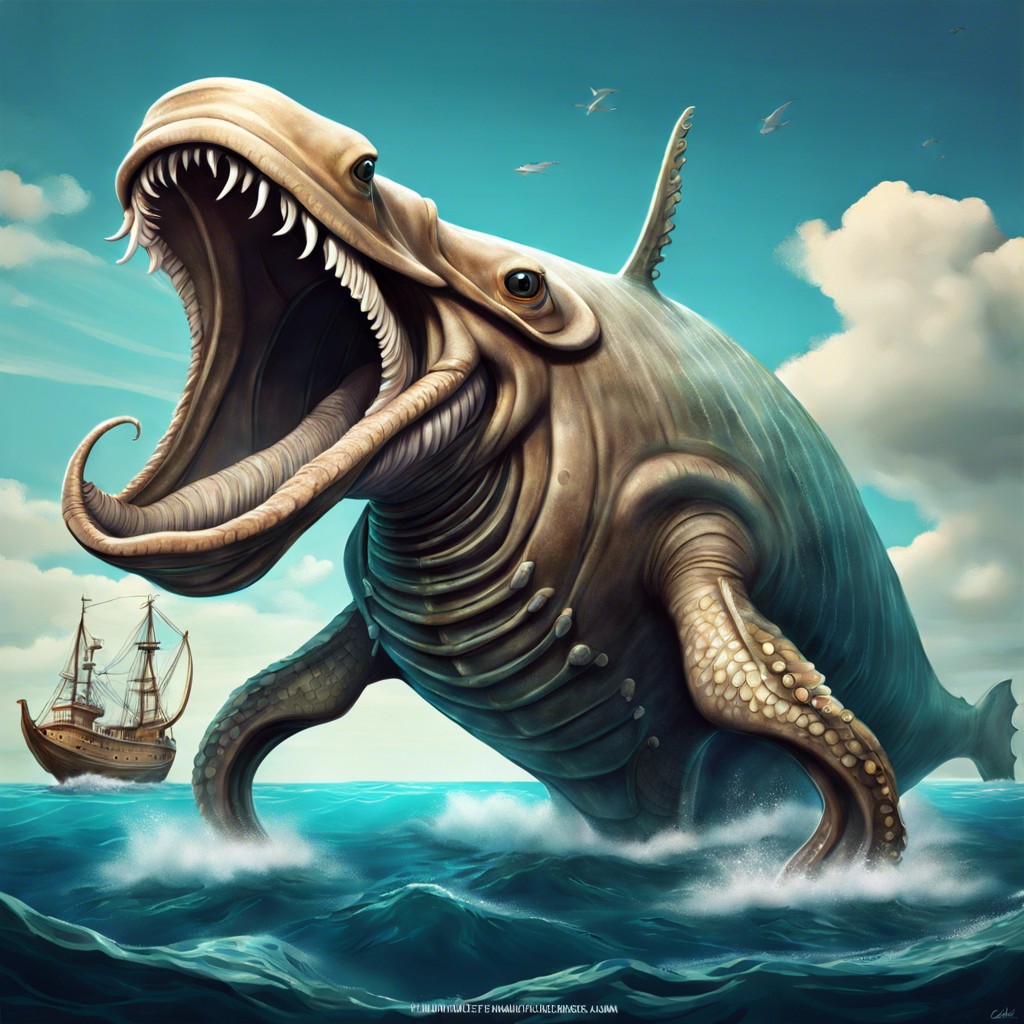In this article, discover the colossal size of the mighty Megalodon and how it stacks up against today’s ocean giants.
Key takeaways:
- Megalodon could grow up to 60 feet long.
- Megalodon teeth over 7 inches long estimate size.
- Megalodon may have lived up to 40 years.
- Fossil evidence and comparisons with modern sharks are key.
- Scientists use teeth, jaw reconstructions, vertebrae, and computer modeling to estimate size.
Megalodon Size Estimates

Based on fossil records, experts believe Megalodon could grow between 40 to 60 feet long. That’s longer than a school bus, and potentially twice the size of a fully grown great white shark!
Researchers have used teeth, the most common Megalodon fossils, to estimate its size. Think about it: some Megalodon teeth are over 7 inches long, bigger than most smartphones!
To estimate the length, scientists use the tooth crown height. For every inch of tooth, they could add about 10 feet to the shark’s total length. Imagine finding one of those teeth under your couch!
In recent studies, researchers have also turned to the shark’s vertebrae. By examining growth rings, akin to those in tree trunks, they inferred not just size, but age. And guess what? Megalodon may have lived up to 40 years—old enough to attend multiple school reunions.
These estimates give us a glimpse of just how massive and impressive this prehistoric predator was. And let’s face it, this shark wouldn’t just take a bite out of your surfboard; it would likely consider it a toothpick.
Fossil Evidence
Diving into the realm of fossil evidence, it’s like piecing together an ancient shark-sized puzzle. First up, teeth. Megalodon teeth are gargantuan, sometimes over seven inches in length. Imagine biting into your sandwich with those! Bigger and bulkier than most shark teeth, they provide significant clues about Megalodon’s formidable size.
Then there’s the vertebrae. Though rare, a few fossilized vertebrae have been found that give insight into the shark’s spine structure. Researchers use these to estimate that Megalodon might have reached lengths of up to 60 feet, rivaling the size of an average school bus.
Lastly, comparing these fossils to modern sharks, primarily the great white, helps scientists infer the overall body size and characteristics. It’s like comparing your friendly neighborhood dog to a wolf – but on an oceanic scale! Each piece of fossil evidence adds to our understanding of this monstrous underwater giant.
Methods for Calculating Size
Paleontologists have some pretty nifty tricks up their sleeves for figuring out exactly how enormous Megalodon really was. It’s like CSI, but with ancient ocean dwellers.
First up, they use the size of Megalodon teeth. Considering these teeth can be larger than your hand and are about as terrifying as your mother-in-law’s stare, scientists compare them to the teeth of modern great white sharks. They scale things up from there.
Next, are the jaw reconstructions. Imagine putting together a Lego set with half the pieces. Scientists estimate the jaw size based on the teeth and then extrapolate the rest of the body size using existing shark proportions. The result? An estimated body length that would put a school bus to shame.
Another method is comparing vertebrae. These ancient fish bones are measured and compared to those of modern sharks, resulting in a solid estimate of size when taking all parts of the skeleton into consideration.
Lastly, computer modeling. Yep, even prehistoric monsters aren’t safe from the grips of our beloved tech. By feeding all these measurements into sophisticated software, scientists can create 3D models to visualize the Meg like never before.
So, it’s a blend of detective work and a sprinkle of tech magic. Who knew ancient shark measuring could be this much fun?




